Whether you’re into mountain bikes, road bicycles, or beach cruisers, there’s a good chance you’ll want to load it onto your vehicle for some distant adventuring.
That can be a lot more complicated than it sounds.
To ensure the safe transport of your bike (or bikes), you’ll definitely want to invest in a proper bike rack. But there are dozens of different types out there and each style can have its own unique benefits.
So how do you choose the right bike rack? We’ll compare and contrast the four main types of bike racks out there, so you can select the ideal match for you, your vehicle, and your bike.
***
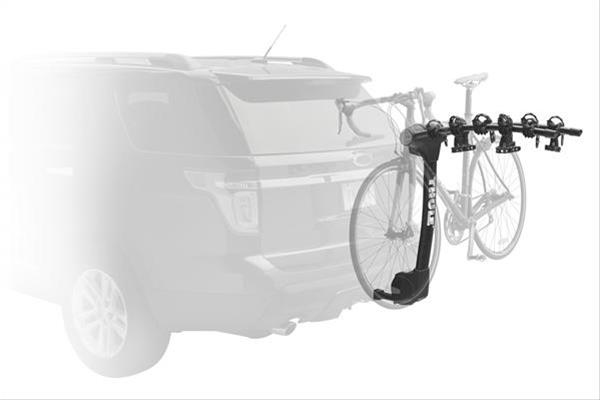
Hitch-Mounted, Arm-Style Bike Racks
Also known as “hanging-style” racks, these receiver hitch-mounted models secure the bike by its crossbar, which can provide greater vehicle ground clearance than a tray-style rack. Arm-style racks are often lighter than their tray-mount counterparts, and typically carry a smaller price tag. Many models allow you to fold down the arm for easier access to your rear cargo area.
The key drawback here is stability—the bikes can bounce and sway around with the road surface, which can actually damage your bikes if not properly secured.
Another potential issue largely affects women’s or BMX-style bikes, which often have an angled crossbar. The angled crossbar forces them to hang askew, unless you purchase an additional frame adapter.
***
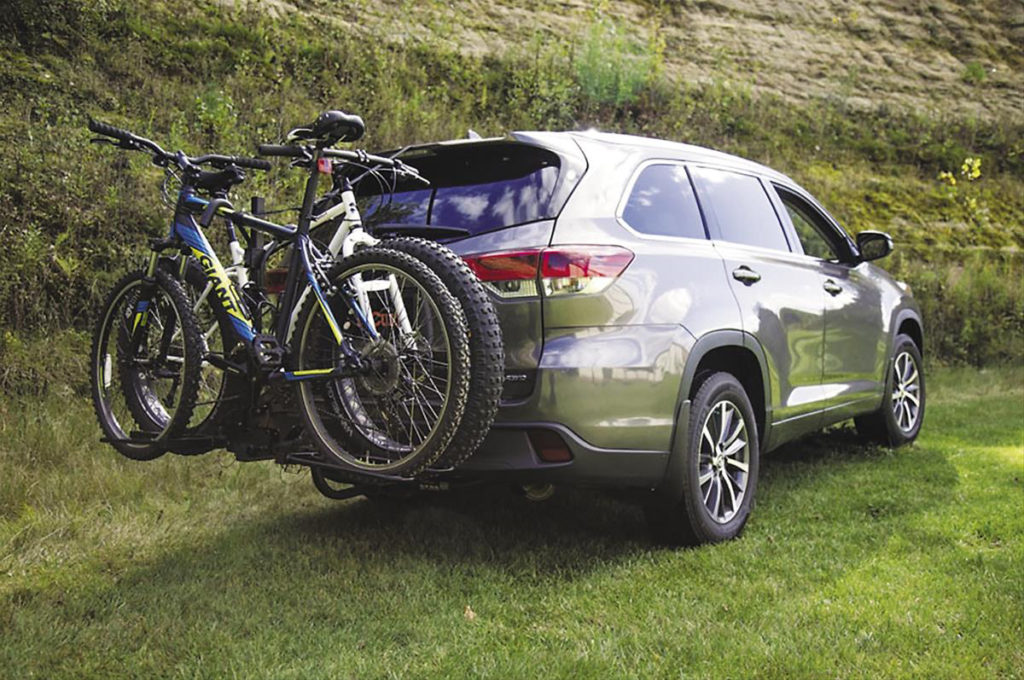
Hitch-Mounted, Tray-Style Bike Racks
Tray-style bike racks secure the bike via a platform. The bike is usually held either by its wheels or frame. While approach/departure angles and ground clearance may be affected, these types of racks offer the best protection against excessive sway or jostling from uneven road surfaces. It’s also a smart choice for multi-bike applications too, as the risk of adjacent bikes rubbing together is mitigated.
Though these racks can be the most expensive of the lot, they offer an excellent blend of security, convenience, and protection.
***
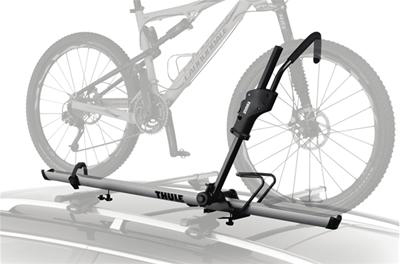
Roof-Mounted Bike Racks
Roof-mounted bike racks require roof crossbars on which to mount.
So, having a vehicle with crossbars—whether they’re there already, or you choose to install them—is a prerequisite to using roof bike racks.
There are obvious times when a roof bike rack is an optimum choice:
- Roof-mounted bike racks won’t impede the ability to access your vehicle’s rear door, hatch, or trunk after the bikes have been loaded.
- Roof bike racks won’t obstruct your rear-window view.
- If you want to leave your bike rack on your vehicle all of the time, roof racks are the best option.
- Many bike racks require a rear hitch mount to attach to your vehicle. If your vehicle doesn’t already have a rear receiver hitch (or if you don’t want to install one)—or maybe you’re already using your receiver hitch to haul a trailer but still want to bring your bikes along—then once again, a roof rack is an elegant solution to the problem.
***
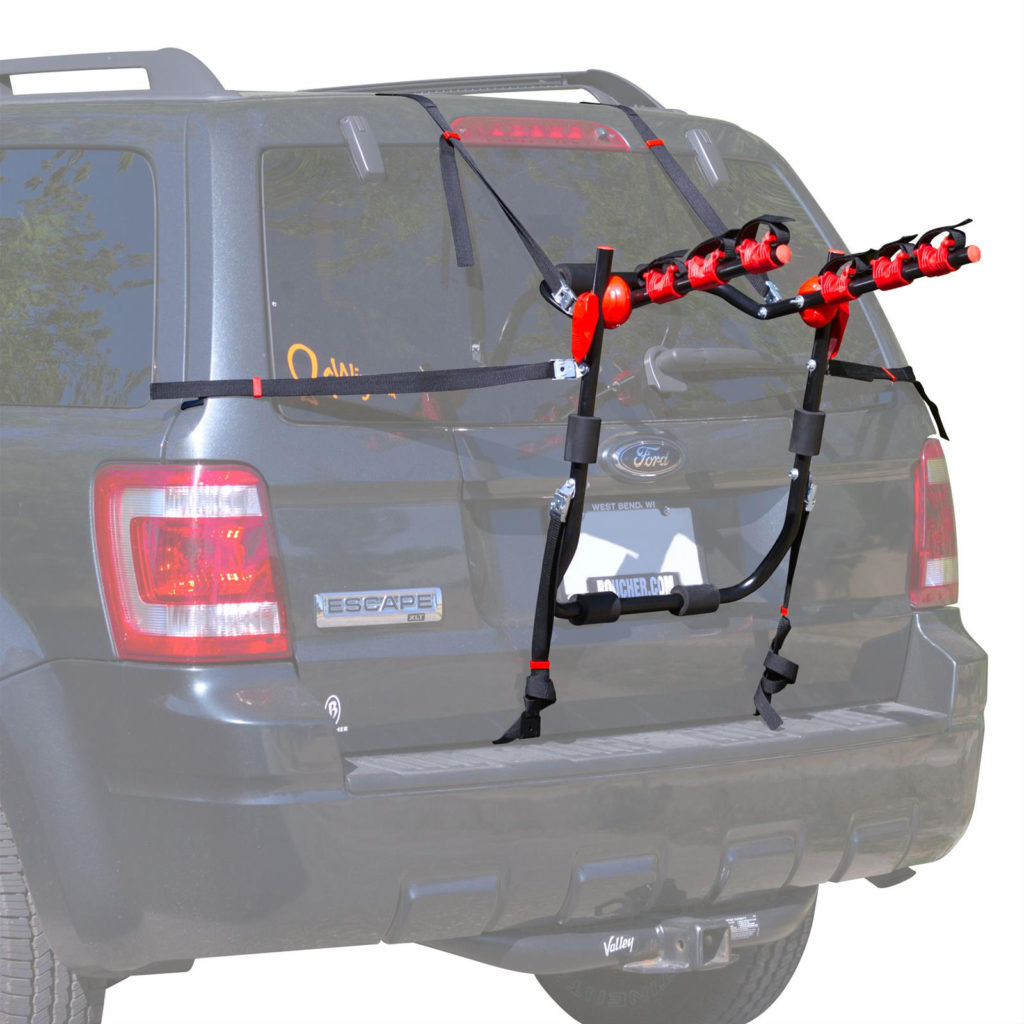
Trunk-Mount Bike Racks
Trunk- or hatch-mounted bike racks tend to be among the least-expensive bike rack styles, so if budget is a major factor, this type of bike rack deserves consideration. Historically, trunk-mounted bike racks could damage your paint easily if extra precautions weren’t taken, but design upgrades in recent years have brought about much better paint protection.
Truck-mount bike racks are typically the easiest to set up, and many of the products offer easy fold-up for convenient storage.
***
There are several more bicycle-mounting solutions out there, including spare tire-mount, ladder-mount, and truck bed-mount options.

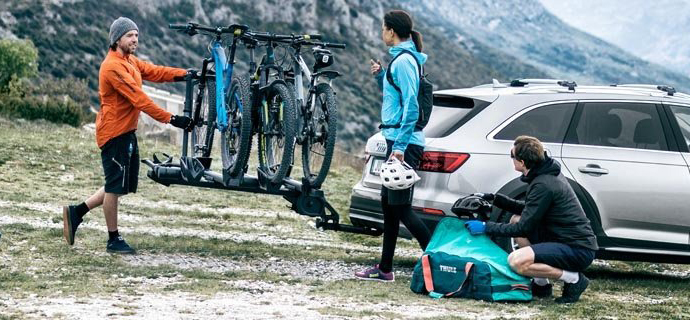
1st; Be careful of bikes blocking views of tail lights.
2nd; Some of your racks extend far enough behind the vehicle that they would require a red safety flag!
Thank you for your article. Perhaps this time I will choose the better Bike Rack for Car because the last time my bikes fell during the trip. I tell you, it was very unpleasant. I have to buy a new one Bike Rack and another bike.
Purchasing a bike rack is an important decision, and there are currently more models available than ever.
[…] Source: Onallcylinders.com/ […]
A well-written article, I was looking for a mount for my Jeep Compass. It is really hard to find a bike mount for suv where i live.
Installing a bike rack is a straightforward process, which even beginners can quickly master. So, how do you install a bike rack on your SUV? You can install your bike rack depending on each style. If you install a bike rack on an SUV’s roof, you will have additional cargo space and an unobstructed rear view. For roof-mounted bike rack installation, you should measure the width and length of your crossbars to identify which bike rack fits on your SUV. Assemble the rack on the ground. Once done, position it on your crossbars to determine its place. Slide the rack through your crossbars and place a fitted rubber pad back in. After that, push the rack’s latch down to lock it in place. Lift the adjustable bar and mount your bike onto it. Tie the straps around the wheels and rack’s frame to secure the bike,…